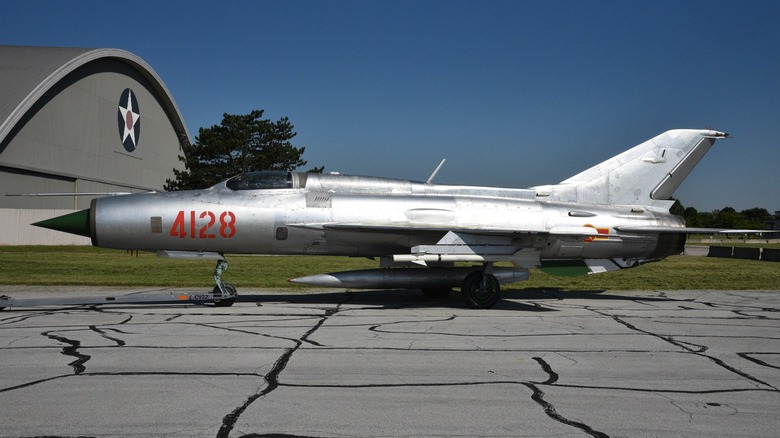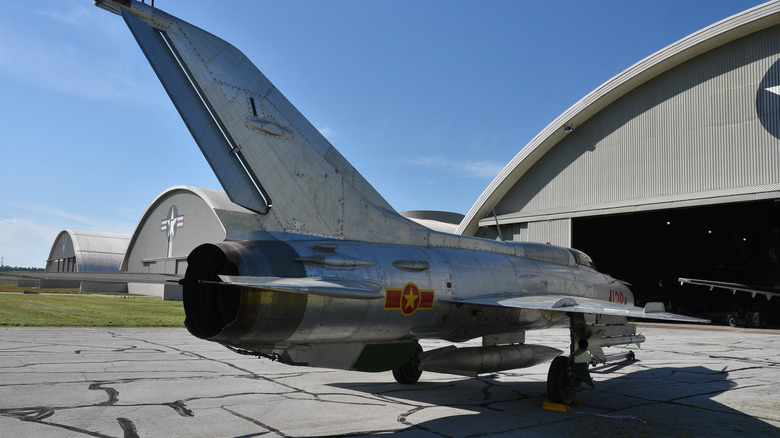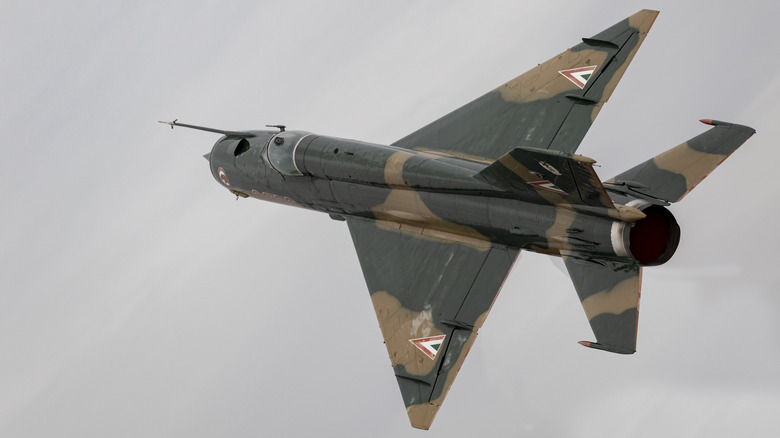
The peculiarly-named MiG-21 Fishbed
was a menace over the skies of Vietnam and embodied the Soviet knack for simple, effective war machines. Its tiny but lethal design was more than enough to give American pilots the chills. While the Mikoyan-Gurevich Design Bureau cranked out many aircraft, the MiG-21 was special because it was the answer to a specific Soviet need in the 1950s: a lightweight and extremely agile fighter.The plane's most iconic feature was a delta-wing design, giving it incredible
high-speed performance and agility. Powered by a single Tumansky R-11 turbojet engine, the MiG-21 could scream across the sky at around Mach 2. When it entered service with North Vietnam in early 1966, it immediately escalated the threat level. Its small size made it a difficult target to spot and hit.
Perhaps the scariest part was the tactics North Vietnamese pilots employed. Often guided by ground controllers with early warning radar, they wouldn't just pick a fight. Instead, they'd wait for the perfect moment to execute their primary mission, which, according to the National Museum of the U.S. Air Force, was to force American strike aircraft to jettison their bombs early and ruin their missions. Add this to the fact that they also perfected hit-and-run tactics, swooping in, firing their 23-mm cannon, and bugging out before the heavier American jets could effectively counter, the MiG-21 was quite the disruptor.
Read more: 11 Of The Most Iconic Ground Attack Military Planes In History
It Exploited The Weak Points Of American Jets

The MiG-21's success wasn't just about its own strengths, it was also about how well it exploited American weaknesses. U.S. air combat philosophy at the time assumed that traditional dogfighting was a thing of the past. An analysis in Air & Space Power Journal noted that planners believed air combat maneuvering was dead because of high-tech sensors and missiles. This thinking meant that early F-4 Phantoms, the MiG's main adversary and one of the fighter jets used during the war, were sent without an internal gun.
American pilots were also hamstrung by strict rules of engagement requiring visual identification of their targets. This often negated the range advantage of their Sparrow missiles. An Air Force report from the era stated that by the time a pilot could make a visual I.D., they were frequently no longer in the ideal missile launch window. This forced them into a close-range fight, which just happened to be the MiG-21's ideal.
Since the aircraft weighed in at just half the size of the F-4, it was far more agile. Moreover, the massive drag from its delta wing in a tight turn would slow the battle down significantly, sometimes as low as around 200 knots -- again, a speed the MiG could handle effectively. To top it off, American missile performance was a huge issue, with more than half of the missiles fired by the USAF reportedly malfunctioning during the war.
How The Jet Shaped An Entire Era

The MiG-21 didn't just define a few dogfights; it defined an entire era of military aviation. It holds the title for one of the most manufactured supersonic jet fighters of all time, with a staggering production run of more than 11,000 aircraft. These were exported to approximately 60 countries over four continents. As The National Interest aptly described it, the jet became the "AK-47 of Soviet warplane exports." The plane's incredible success proved the value of lightweight, agile fighters.
Again, one of its biggest perks was its simplicity, which made maintenance manageable. This is why it was so popular with smaller air forces that had limited funding. But the MiG-21's story isn't over. Nearly seven decades after its first flight in 1955, a handful of nations, like India continue to have them in service. This is even though a series of crashes have earned it the title of a "flying coffin."
Want the latest in tech and auto trends? Subscribe to our free newsletter for the latest headlines, expert guides, and how-to tips, one email at a time.
Read the original article on SlashGear.












